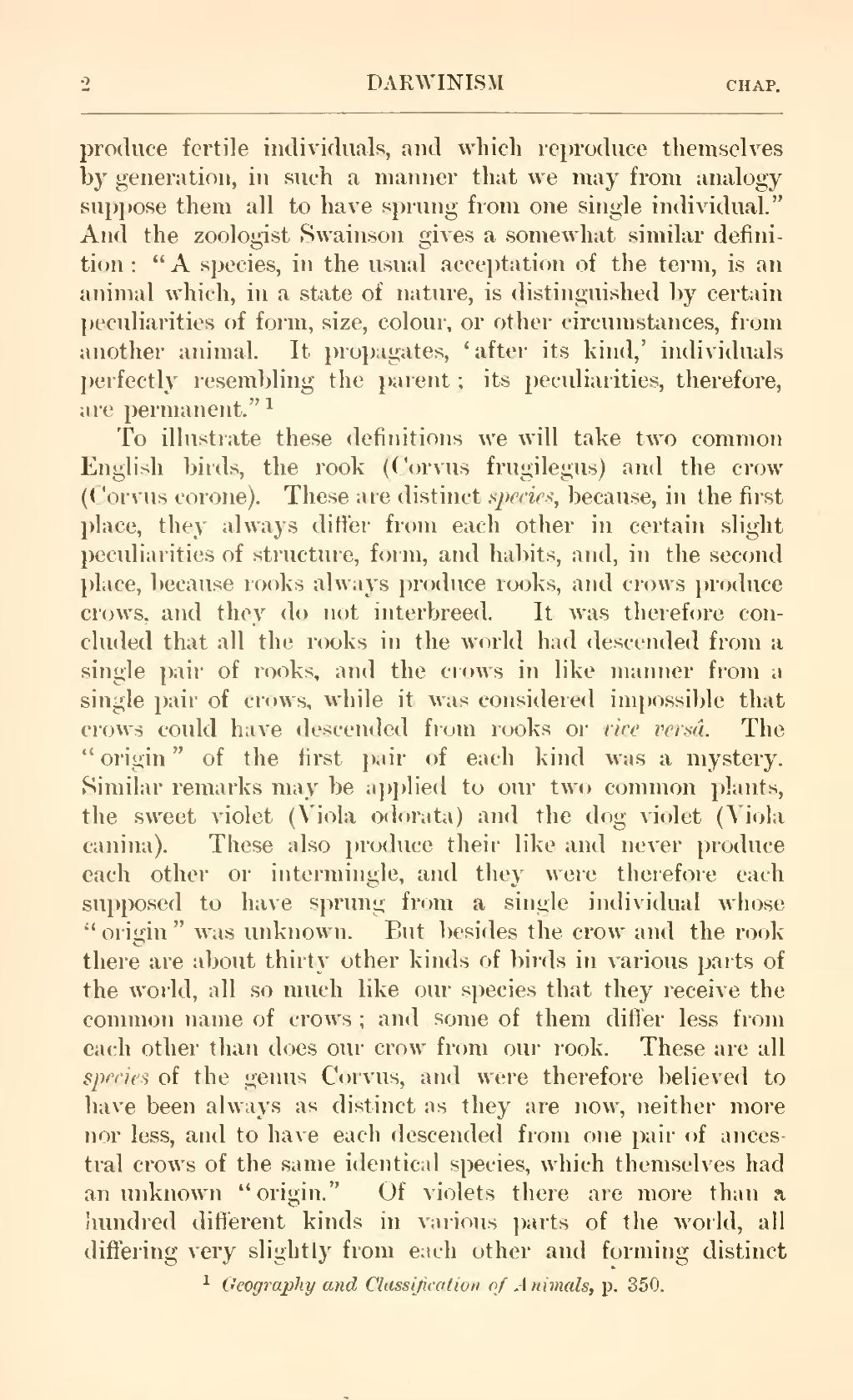produce fertile individuals, and which reproduce themselves by generation, in such a manner that we may from analogy suppose them all to have sprung from one single individual." And the zoologist Swainson gives a somewhat similar definition: "A species, in the usual acceptation of the term, is an animal which, in a state of nature, is distinguished by certain peculiarities of form, size, colour, or other circumstances, from another animal. It propagates, 'after its kind,' individuals perfectly resembling the parent; its peculiarities, therefore, are permanent."[1]
To illustrate these definitions we will take two common English birds, the rook (Corvus frugilegus) and the crow (Corvus corone). These are distinct species, because, in the first place, they always differ from each other in certain slight peculiarities of structure, form, and habits, and, in the second place, because rooks always produce rooks, and crows produce crows, and they do not interbreed. It was therefore concluded that all the rooks in the world had descended from a single pair of rooks, and the crows in like manner from a single pair of crows, while it was considered impossible that crows could have descended from rooks or vice versâ. The "origin" of the first pair of each kind was a mystery. Similar remarks may be applied to our two common plants, the sweet violet (Viola odorata) and the dog violet (Viola canina). These also produce their like and never produce each other or intermingle, and they were therefore each supposed to have sprung from a single individual whose "origin" was unknown. But besides the crow and the rook there are about thirty other kinds of birds in various parts of the world, all so much like our species that they receive the common name of crows; and some of them differ less from each other than does our crow from our rook. These are all species of the genus Corvus, and were therefore believed to have been always as distinct as they are now, neither more nor less, and to have each descended from one pair of ancestral crows of the same identical species, which themselves had an unknown "origin." Of violets there are more than a hundred different kinds in various parts of the world, all differing very slightly from each other and forming distinct
